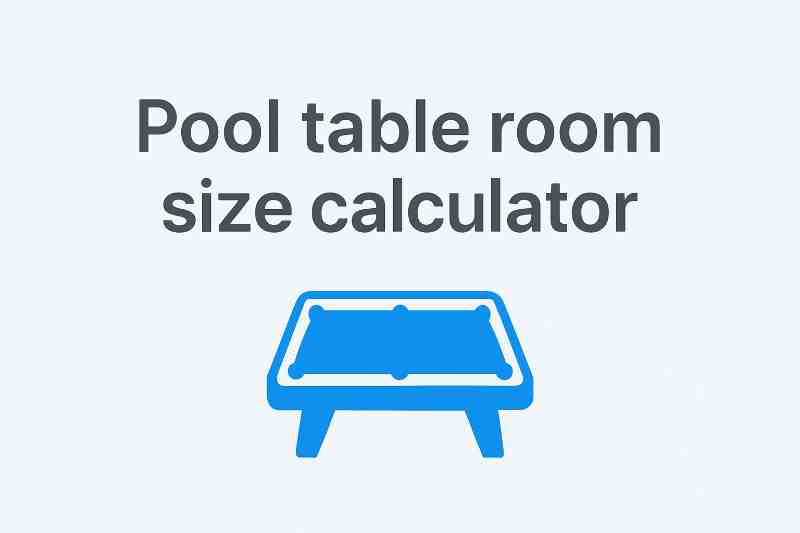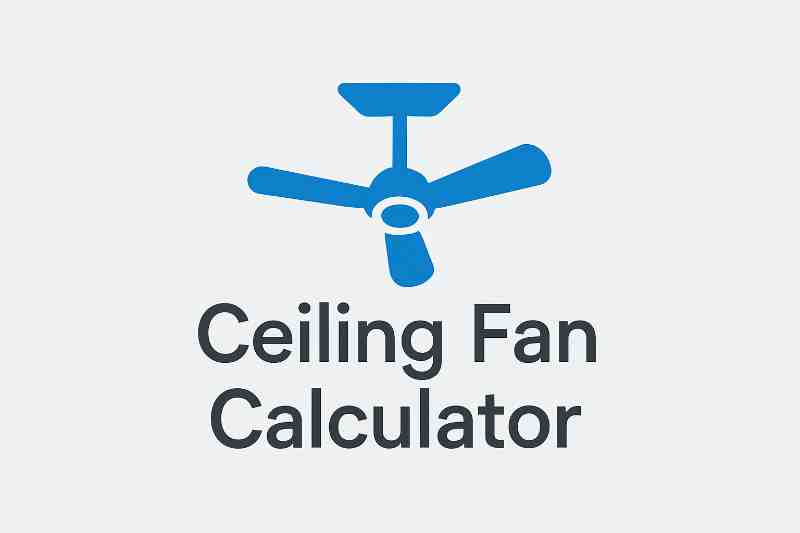Speaker & Subwoofer Calculator
Results
Speaker Placement: —
Optimal positioning for balanced sound.Subwoofer Placement: —
Best location for deep bass response.Room Modes: —
Potential bass peaks/nulls based on room dimensions.Recommendations: —
For optimal audio performance.Getting the right speaker and subwoofer size for your room is essential for rich, balanced sound. A sub that's too small won’t deliver satisfying bass, while one that's too big may overwhelm your space. Our Speaker & Subwoofer Size Calculator helps you find the optimal size based on your room’s dimensions, listening distance, and usage type (music, movies, gaming).
Whether you’re building a home theater, upgrading your stereo setup, or fine-tuning your gaming zone, this tool gives you the guidance to get it right.
What Size Subwoofer Do I Need for My Room?
Subwoofer size is generally measured in inches by cone diameter (e.g., 8", 10", 12", 15"). The right size depends on:
- Room volume (L × W × H)
- Listening preferences (casual, cinematic, audiophile)
- Distance between subwoofer and listening position
Recommended Subwoofer Size by Room Volume
| Room Volume (cubic ft) | Recommended Subwoofer Size | Suggested Power (Watts RMS) |
|---|---|---|
| Under 1,000 cu ft | 8"–10" | 75–200W |
| 1,000–2,000 cu ft | 10"–12" | 150–300W |
| 2,000–3,000 cu ft | 12"–15" | 250–500W |
| Over 3,000 cu ft | Dual 12"+ or 15" | 500W+ |
Speaker Size vs Room Size
Speaker size isn’t just about loudness—larger drivers produce fuller sound, but smaller speakers can sound better in smaller, untreated rooms. Use this guide to balance size with acoustics:
- Small rooms (under 150 sq ft): Bookshelf speakers or 4"–6" drivers
- Medium rooms (150–300 sq ft): 6.5"–8" drivers or compact towers
- Large rooms (300+ sq ft): 8"–10"+ drivers, floorstanding speakers, dual subs
Subwoofer Wattage & SPL Recommendations
Wattage (RMS) and SPL (Sound Pressure Level) determine how loud and deep your sub can go. Most rooms perform best with a subwoofer that can reach 105 dB at peak levels.
Wattage Recommendation Table
| Usage Type | Suggested Subwoofer Power |
|---|---|
| Casual listening | 75–150W |
| Home theater | 200–500W |
| Large rooms or bass-heavy music | 500–1000W |
Subwoofer Placement Tips
Where you place the subwoofer also affects perceived bass:
- Corner placement = more bass but may cause boominess
- Wall-centered = balanced bass for most rooms
- Near seating = better tactile response, especially for movies
- Sub crawl trick: Place the sub where you sit, walk around the room, and find the best-sounding spot—that’s where it should go!
FAQs About Subwoofer and Speaker Sizing
What’s the best subwoofer size for a 12x15 room?
This room is 180 sq ft and likely around 1,440 cu ft. A 10" or 12" subwoofer with 150–300W RMS is ideal.
Can a subwoofer be too big for a room?
Yes. A very large sub can overwhelm a small space, causing boomy or muddy bass. It’s better to match sub size to room volume.
Do I need two subwoofers?
Dual subs improve bass distribution and eliminate dead zones, especially in rooms over 2,500 cu ft or with irregular layouts.
What's more important: subwoofer size or power?
Both matter. Size affects how low the sub can go (frequency response), while power affects output and clarity. Aim for balance.
How do I calculate room volume?
Multiply length × width × ceiling height (in feet). For example, a 12x15 room with 8 ft ceiling = 1,440 cubic feet.
Final Thoughts
Choosing the right speaker and subwoofer size for your room isn’t just about volume—it’s about getting immersive, clean sound that feels just right. Use our Speaker & Subwoofer Size Calculator to match your room dimensions with the right gear, and enjoy your movies, music, or gaming like never before.



